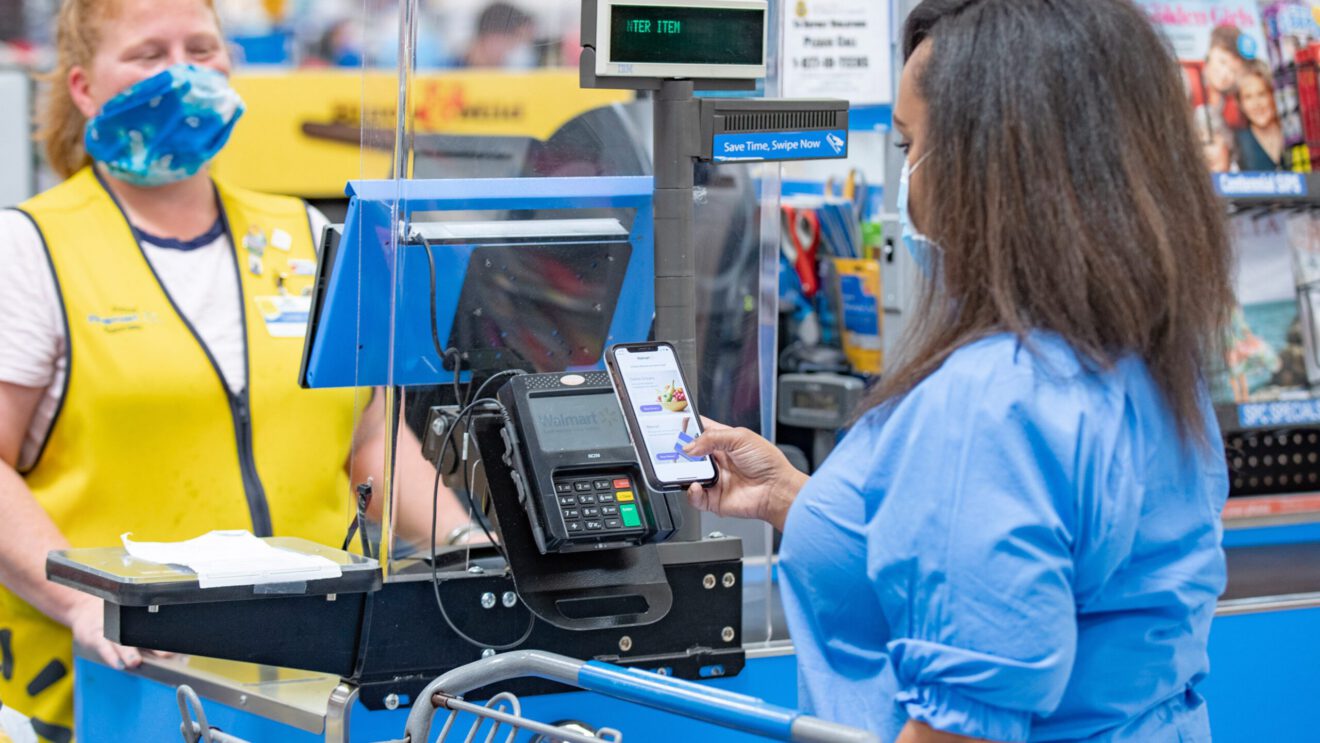This post is sponsored by Walmart Media Group.
Even before the pandemic struck, consumers were moving toward a more omnichannel way of shopping. From searching for products on their smartphones to making a purchase in-store, the shopper journey is a lot more complex than it used to be. How can marketers adjust their strategies to meet these customers wherever they shop?
Stephen Howard-Sarin, Walmart Media Group‘s vice president of strategy & transformation, sat down to talk about just that. Read on for insights into measuring the impact digital advertising has on physical store sales, the importance of transparency in retail advertising and why brands should figure out what role they play in consumers’ lives.
What shifts have you noticed about consumer behavior with shopping both in-store and online, especially amid the pandemic?
The present and future of retail are omni. Curbside grocery pickup, click-and-collect and other omni-powered shopping solutions were already growing before COVID-19. The pandemic accelerated adoption for both e-commerce and omnichannel shopping significantly.
Our e-commerce sales grew 97% in Q2, and we have expanded our store pickup and delivery slots by nearly 30% since February. Families are safety-minded and careful, so we saw that they reduced their number of shopping trips that took them into physical stores and were spending more on each trip at the beginning of the pandemic. We’ve also seen our customers opt for contactless payment, increasing usage of Walmart Pay.
How has Walmart Media Group adapted its marketing and advertising strategies to focus on increased omnichannel shopping?
The core of Walmart Media Group’s ad-technology platform is the ability to measure digital advertising’s impact on the sales in physical stores. Measuring ROI for e-commerce is easy in comparison! It’s that omnichannel view that differentiates us from our competitors. As the shopping journey becomes more “hybrid” — between physical and digital — our ability to measure across it all makes advertising more accountable.
Everything Walmart does starts with helping people save money, so they can live better. We are innovating like never before to improve every family’s shopping trip. Whether it’s the launch of our redesigned stores or introducing Walmart+ with home delivery, everything we do keeps the customers’ needs in mind. And the more ways America shops with Walmart, the more relevant and valuable Walmart Media Group’s omnichannel advertising platform becomes.
What are some strategies brands can employ to help them meet customers in whatever space they currently shop?
“Who are we in customers’ lives?” “How important is that right now?” These are the two most essential questions brand leaders ought to ask themselves. This is not the best time for features-and-benefits marketing unless your product is pragmatically part of a family’s pandemic response: health, safety, doing more at home. Emphasizing traditional, but irrelevant, benefits right now (i.e. “great for parties”) could ricochet and damage your brand’s reputation.
Product availability is a key dimension of your brand promise, too. Incumbent brands must be conscious of keeping their products in-stock in physical retail to continue to be the customers’ top choice. Customers flocked to the best-known brands, but they also trialed a lot of new brands and private-label products this summer — and they’ll switch again.
What features or benefits are most important when it comes to enhancing the customer journey? How is Walmart Media Group strengthening these initiatives?
Providing full accountability and transparency into retail advertising is foundational to Walmart Media Group, and that’s how we earn our suppliers’ trust. We are committed to delivering omnichannel return-on-ad-sales results plus actionable campaign insights for our advertisers. We took a bold step this summer by launching on-demand, omnichannel Walmart Performance Dashboards for every Walmart Media Group campaign — for free.
With 90% of America shopping at or on Walmart each year, 4,753 physical stores across the US and a leading e-commerce platform, no other retailer has our quantity or quality of first-party retail data to help advertisers target customers and measure sales, both online and in-store.
Can you tell us about how Walmart is ramping up personalized, in-store advertising opportunities?
Walmart is the largest retailer in the US. The biggest opportunity for us, currently, is to expand our in-store advertising avenues and make them easily accessible to advertisers through omnichannel closed-loop measurement.
The in-store shopping experience is now, in a sense, an extension of our digital relationship with customers. People shop with their phone in one hand while pushing the cart up the aisle with the other. Walmart Media Group has leaned into this hybrid of digital and physical by introducing new advertising touchpoints in Walmart stores: an improved TV Wall in Electronics with sight, sound and motion; impulse-purchase ads on the self-checkout screen; curbside-pickup videos on customers’ devices; and geo-aware ads in the Walmart app while in “store mode.” More to come!
Stephen Howard-Sarin has spent nine years at the intersection of large-scale commerce and data-driven advertising. At Walmart Media Group, Stephen leads the Strategy and Enterprise Transformation teams, defining long-term business direction, M&A, competitive analysis, strategic partnerships and retail integration. He started at Walmart Media Group in 2017 as Vice President of Sales. Prior to Walmart, Stephen spent five years as head of sales and marketing at eBay Advertising. Previously, he was Vice President of Product and General Manager of B2B brands at CBS Interactive. In the 1990s, he was a digital and print editor at Ziff-Davis. Stephen’s career is essentially “media bingo”: Editorial, Product, Design, Sales, Marketing and, now, Strategy and Transformation. Stephen is a graduate of the University of California, Berkeley, and lives in San Mateo, Calif.
